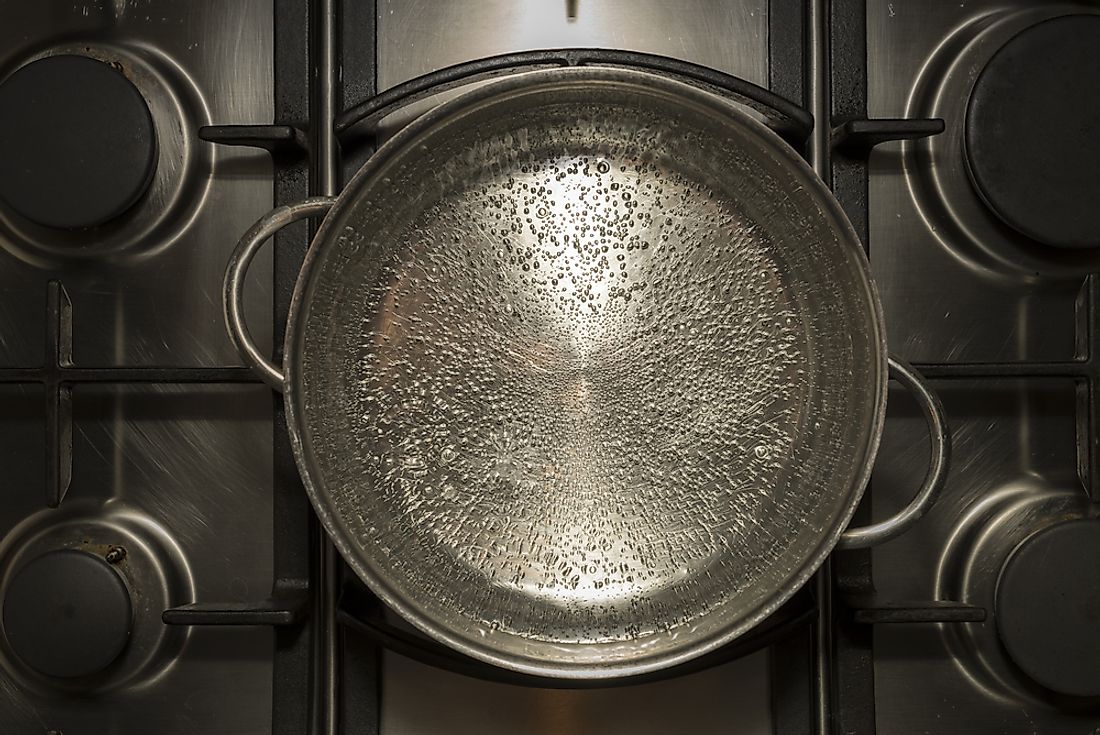What is the Boiling Point of Water?

What is The Boiling Point of Water?
The temperature at which substance change from liquid to the gaseous state is known as the boiling point. To be more specific, the boiling point of a substance is the temperature at which both its liquid and vapor or gas states exist in equilibrium. Boiling point only occurs when heat is applied to the liquid substance; its temperature reaches a point where the liquid’s vapor pressure is the same as the pressure of the surrounding gases. When a substance reaches boiling point, the temperature remains constant and does not rise any further. During evaporation, the extra heat energy that is distributed is absorbed as latent heat of vaporization and changes the liquid to vapor. The change in temperature not only takes place on the surface of the liquid but also throughout the entire volume of the liquid resulting in the formation of bubbles of gas.
What Does "Boiling Point" Mean?
If water is poured in a cooking pot and left on a stove to overheat, it will automatically start boiling. The phrase ‘boiling point’ essentially means that water is transitioning from liquid to gaseous state at a rapid speed. Boiling water is characterized by energetic bubbles and steam and it is considered to be hot. Conventionally, the temperature at which water boils is 100 degrees Celsius or 212 Fahrenheit but only at sea level. In this regard, the boiling point of water changes with a change in barometric pressure. When the altitude increases the boiling point of water decreases. For instance, the boiling of water at Mount Everest is 68 degrees Celsius or 154 Fahrenheit.
Uses of Boiling Water
Water’s boiling point is used for a variety of purposes, for example, it is useful for cooking vegetables, potatoes, pasta and a lot more. Additionally, there are people who boil water for the purpose of sterilizing it so that it can be safe for drinking. Despite the fact that this method is effective, there are certain precautionary methods that one should consider taking. First and foremost, most microorganisms and bacteria die when water is boiled, but in some cases, such organisms die depending on the temperature of water rather than whether it is boiled or not. However, the temperature of boiling water at different altitudes may not kill some microorganisms and bacteria. Secondly, some organisms are resistant to boiling water at any given temperature. To ensure that most if not all of the bacteria are dead it is advisable that water is left to boil for at least 10 minutes.
Factors Affecting the Boiling Point of Water
Water’s boiling point is dependent on two factors which are; some impurities in the water and atmospheric pressure. In regards to atmospheric pressure, the boiling point of water decreases with higher altitudes. Some impurities in water is another factor that affects its boiling point. For instance, at a standard atmospheric pressure, pure water has a fixed boiling point. However, if impurities such as sodium chloride or the common table salt is added to pure water then the boiling point of water changes. For this reason, boiling points are often used to determine the purity of substance because pure substances normally have fixed boiling points.











